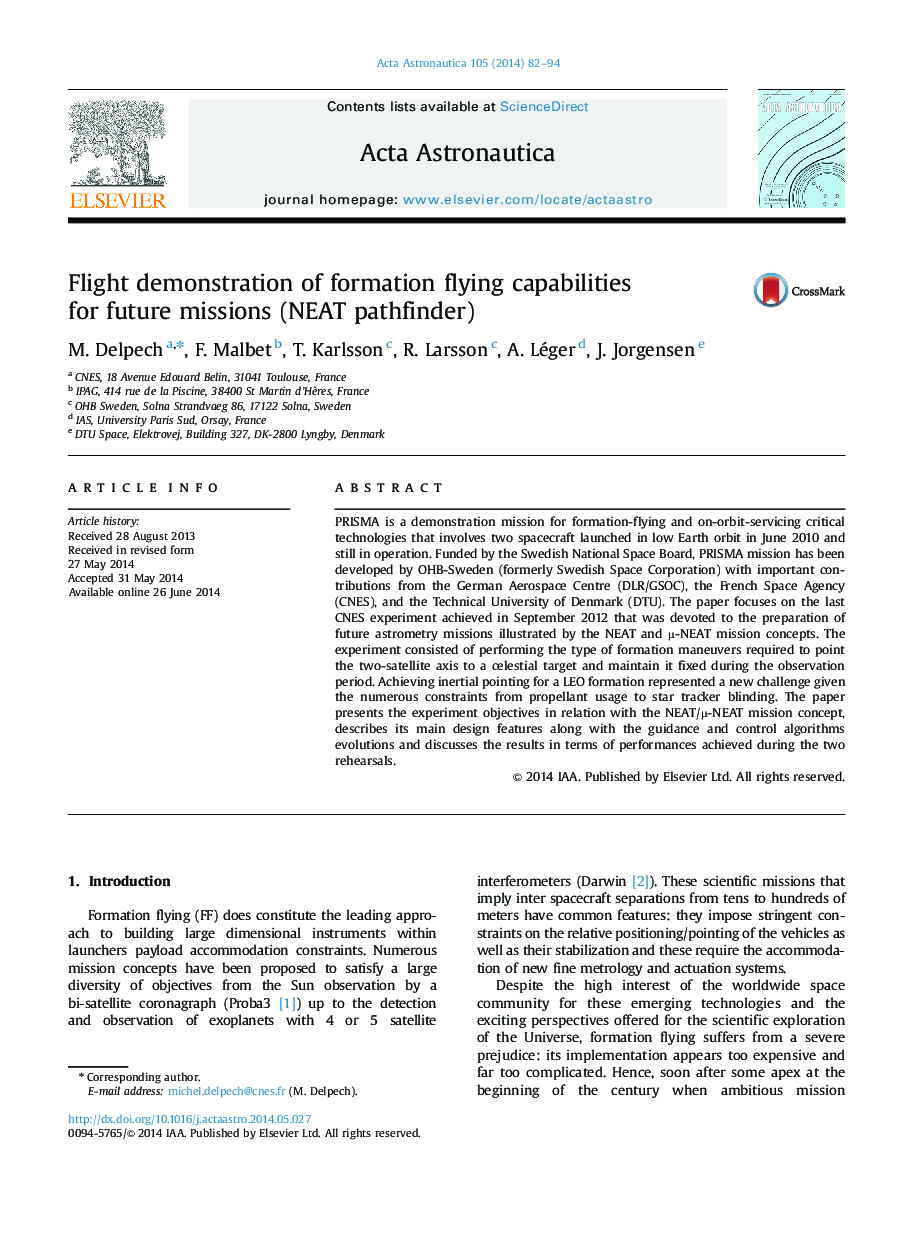| کد مقاله | کد نشریه | سال انتشار | مقاله انگلیسی | نسخه تمام متن |
|---|---|---|---|---|
| 1714505 | 1013328 | 2014 | 13 صفحه PDF | دانلود رایگان |

• Formation flying maneuvers in inertial frame were demonstrated in low Earth orbit.
• The NEAT mission concept configuration was emulated with PRISMA satellites.
• The PRISMA formation was pointed to a series of NEAT mission scientific targets.
• Two rehearsals were successfully performed using Radio Frequency then GPS navigation.
• Relative position error of 4 cm (1σ) was achieved during inertial station-keeping.
PRISMA is a demonstration mission for formation-flying and on-orbit-servicing critical technologies that involves two spacecraft launched in low Earth orbit in June 2010 and still in operation. Funded by the Swedish National Space Board, PRISMA mission has been developed by OHB-Sweden (formerly Swedish Space Corporation) with important contributions from the German Aerospace Centre (DLR/GSOC), the French Space Agency (CNES), and the Technical University of Denmark (DTU). The paper focuses on the last CNES experiment achieved in September 2012 that was devoted to the preparation of future astrometry missions illustrated by the NEAT and µ-NEAT mission concepts. The experiment consisted of performing the type of formation maneuvers required to point the two-satellite axis to a celestial target and maintain it fixed during the observation period. Achieving inertial pointing for a LEO formation represented a new challenge given the numerous constraints from propellant usage to star tracker blinding. The paper presents the experiment objectives in relation with the NEAT/µ-NEAT mission concept, describes its main design features along with the guidance and control algorithms evolutions and discusses the results in terms of performances achieved during the two rehearsals.
Journal: Acta Astronautica - Volume 105, Issue 1, December 2014, Pages 82–94